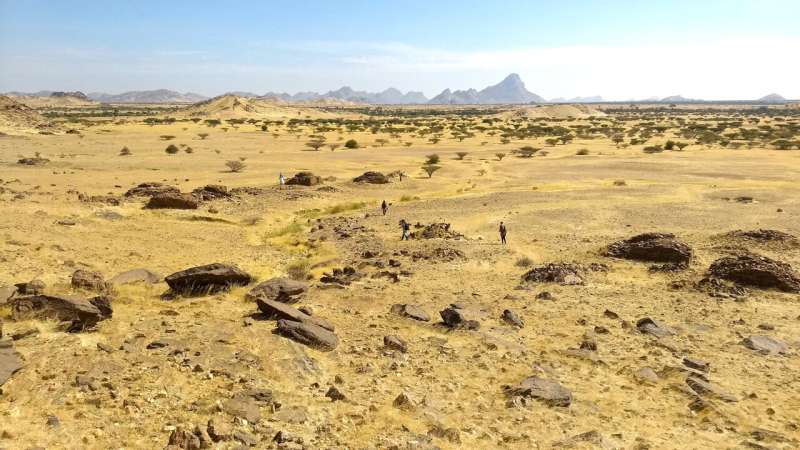Statistical methods designed for cosmology reveal tomb distribution in Sudan

Sudanese Islamic burial sites are distributed according to large-scale environmental factors and small-scale social factors, creating a galaxy-like distribution pattern, according to a study published July 7, 2021 in the open-access journal PLOS ONE by Stefano Costanzo of the University of Naples "L'Orientale" in Italy and colleagues.
The Kassala region of eastern Sudan is home to a vast array of funerary monuments, from the Islamic tombs of modern Beja people to ancient burial mounds thousands of years old. Archaeologists don't expect these monuments are randomly placed; their distribution is likely influenced by geological and social factors. Unraveling the patterns of the funerary landscape can provide insight into ancient cultural practices of the people who built them.
In this study, Costanzo and colleagues collected a dataset of over 10,000 funerary monuments in the region, distributed over 4000 km2, identified by field work and remote sensing using satellite imagery. They then analyzed the arrangement of these sites using a Neyman-Scott Cluster model, originally developed to study spatial patterns of stars and galaxies. This model revealed that, just like stars cluster around centers of high gravity, burials in Kassala cluster in the hundreds around central "parent" points which likely represent older tombs of importance.
The authors hypothesize that the larger scale distribution of tombs is determined by the environment, with "high-gravity" areas centering on regions with favorable landscapes and available building materials. Smaller scale distribution seems to be a social phenomenon, with tombs commonly built nearby older structures, possibly including recent family burials or more ancient burials of traditional importance. This is the first time this cosmological approach has been applied to archaeology, representing a fresh tool for answering questions about the origins of archaeological sites.
The authors add: "An international team of archaeologists discovered the environmental and societal drivers underlying the creation of the monumental funerary landscape of Eastern Sudan with a novel application of advanced geospatial analysis."
More information: Costanzo S, Brandolini F, Idriss Ahmed H, Zerboni A, Manzo A (2021) Creating the funerary landscape of Eastern Sudan. PLoS ONE 16(7): e0253511. doi.org/10.1371/journal.pone.0253511
Journal information: PLoS ONE
Provided by Public Library of Science





















